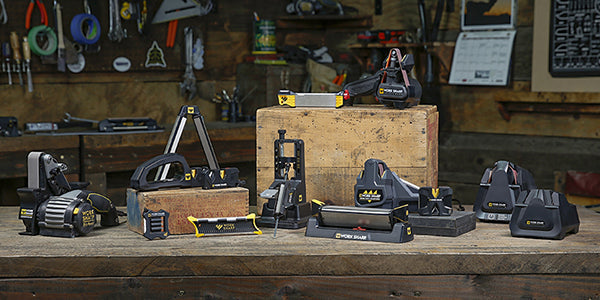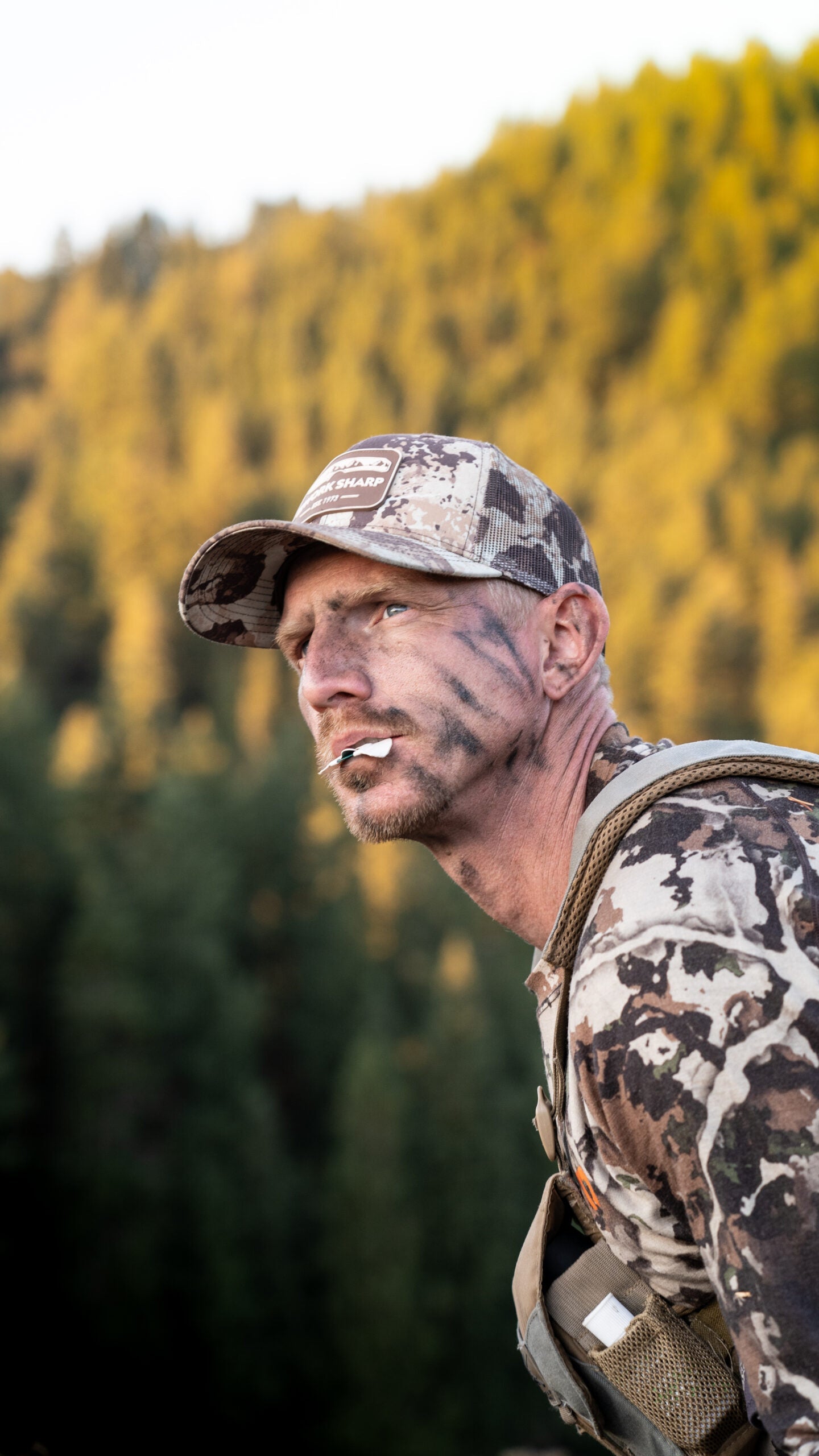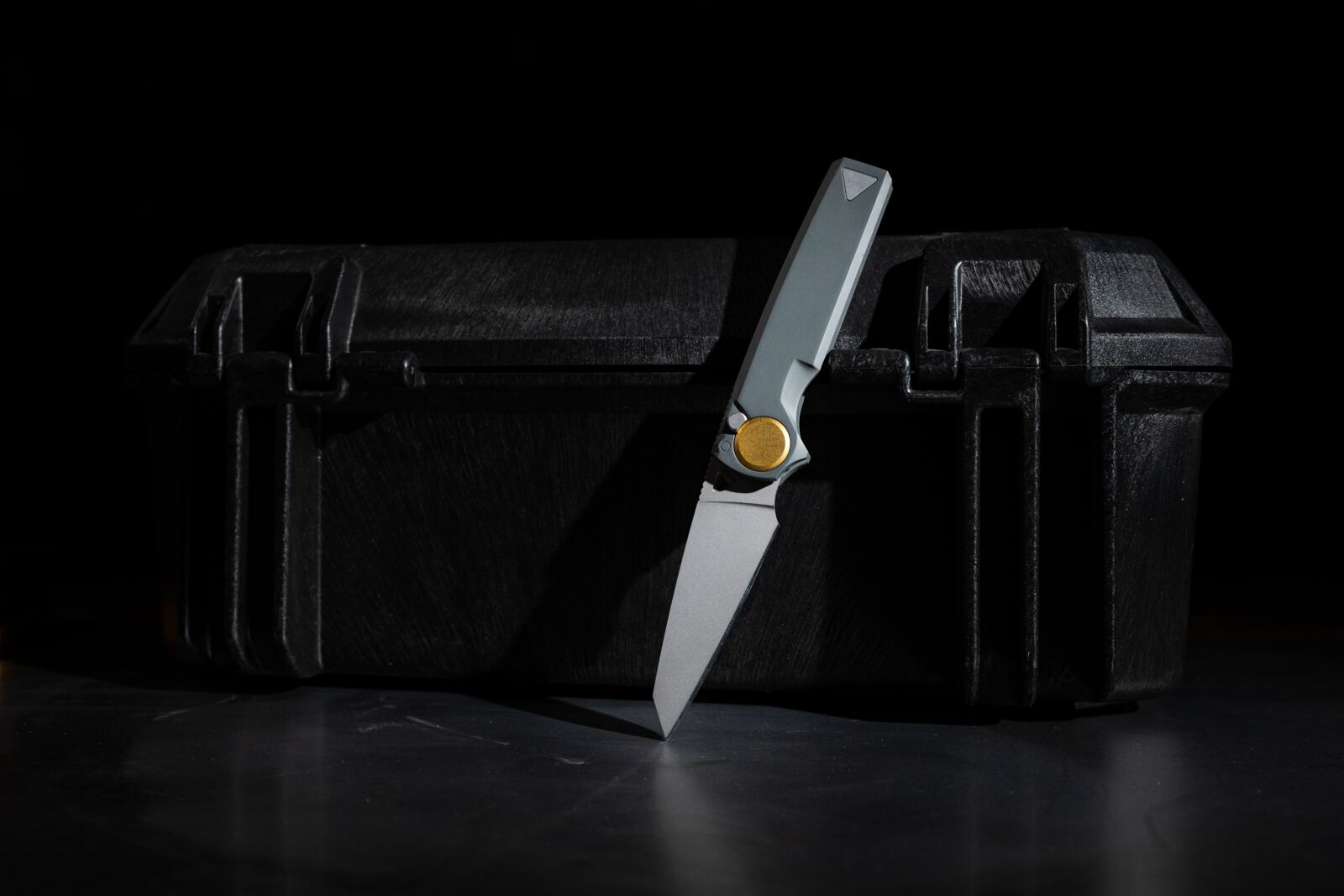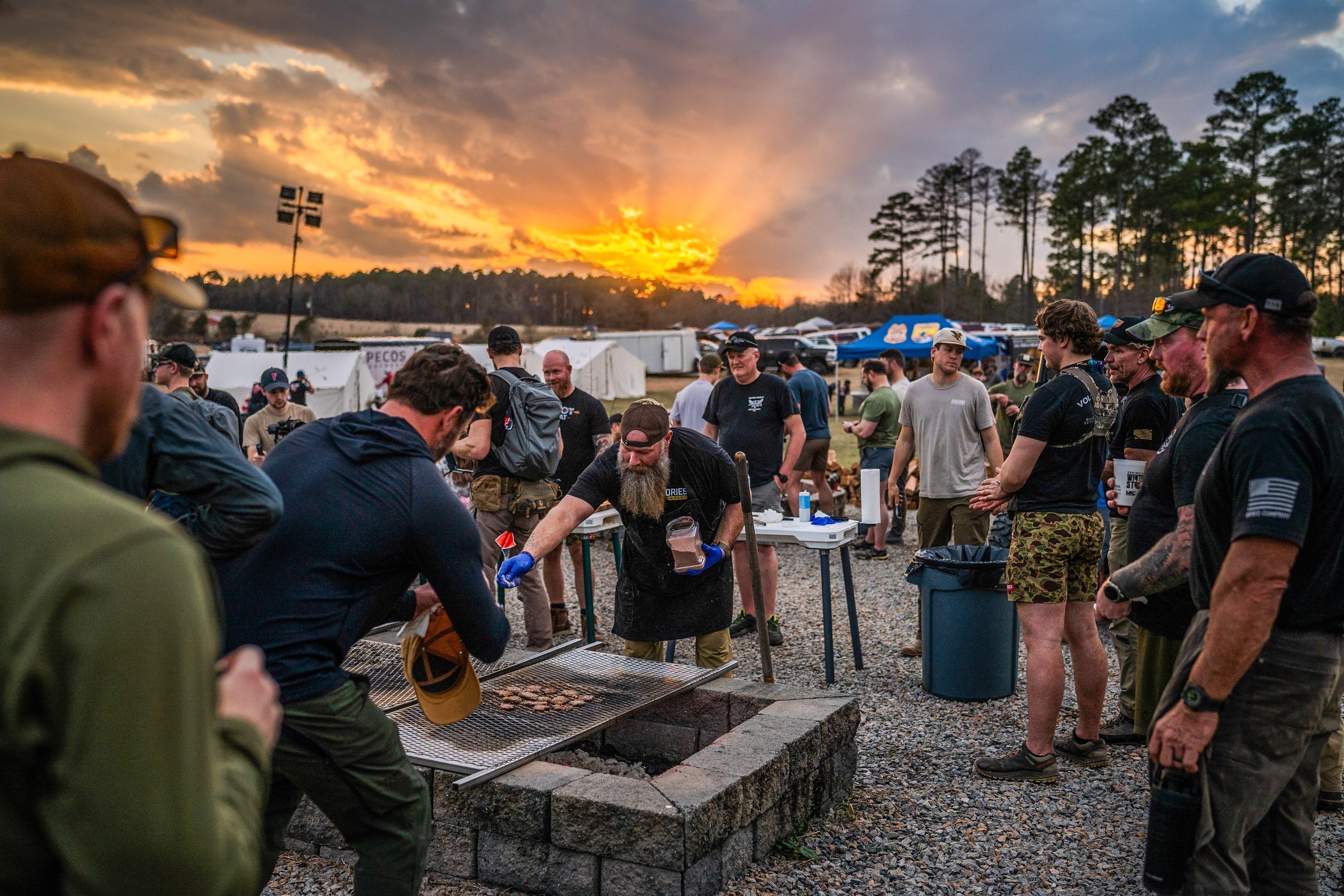Over the past 10 years, a huge “Kokanee Craze” has ignited within the angling community throughout the Pacific Northwest and British Columbia Regions. Kokanee are second only to Rainbow Trout as the most popular game fish in British Columbia. Work Sharp Pro Staffer Danny Coyne, an expert fisherman located in Washington, shares the 101 when it comes to understanding and successfully catching this species. More often than not, anglers tend to misunderstand Kokanee fishing tactics and pursue them like pursuing Rainbow Trout. There are some similar techniques between the two, but a Kokanee’s nature to strike your lure is much different than a Rainbow Trout.
Danny Coyne's Kokanee Fishing 101
Biology of a Kokanee
Kokanee are landlocked Sockeye Salmon. Like Sockeye, Kokanee mature between 3 to 5 years of age and then die once they have spawned. They feed almost exclusively on Zooplankton. They strain zooplankton from the water by means of many fine combs on their gills called “gill rakers”. They will also eat tiny plants, insects, and freshwater shrimp when available. Due to the location of their food source, Kokanee will spend most of their time suspended mid depth in the lake. It is important to note that Zooplankton is light sensitive, which means on brighter days the Kokanee’s forage will descend in the water column and the Kokanee will follow.
A Kokanee’s size depends on genetics, but they are also density dependent which means their size can be contingent on how many other Kokanee are within the lake competing for food. Typically, the less Kokanee in a healthy lake the bigger the Kokanee will be. Kokanee are also prey for other predator fish such as Rainbow Trout and Char. On average a mature large Rainbow Trout or Bull Trout will eat two adult Kokanee per day. That means it is vital that the gear you present while fishing for Kokanee does not mimic a threat similar to these predator fish.
Kokanee are very sensitive to water temperatures. They prefer water temps ranging from 45F to 54F, with 53F being optimum. Any prolonged exposure to temperatures greater than 60F can be fatal to the fish. This is one of the many reasons why Kokanee do not handle catch and release well.
Locating Kokanee
Kokanee scatter throughout the lake, so where they were one day doesn’t mean they will be there the next. Using good sonar will stack the odds in your favor to locate the fish. Kokanee are a schooling fish that makes them easy to locate once you travel over top of the group. Areas in the lakes in which you want to target are areas with currents, wind-blown points, tight narrow contour lines, and large points that come out into the main lake. These are all zones that you will locate Kokanee due to their food source being pushed into these areas.
Since Kokanee can range from all depths of the water column, using downriggers will assist greatly in getting your presentation to the desired depth. If you don’t have downriggers, use a variety of inline weights to aid in getting your gear down deep enough to where the Kokanee reside. When using weights be sure to always count out how much line is being put out and the speed in which you are trolling. Keeping track of this allows you to duplicate the results once you get into fish.

Kokanee Tackle
There has been a lot of innovation and advancement in Kokanee tackle over the past decade. The old Gang Trolls and Ford Fenders which were once favored by anglers are now quickly becoming a thing of the past. Instead of using heavy metal gear that weighs down your rod, anglers are now switching to ultra-light tackle options with medium slow action rods. Using this lighter gear allows one to play the fish and absorb the Kokanee’s aggressive fight with increased amount of fish being landed rather than lost.
Lures
There are a variety of Kokanee lures on the market and the majority of the tackle we present to a Kokanee are not imitating something natural that they will eat. Instead, Kokanee lures are created to “tick them off” and get them irritated to entice a bite! Kokanee are like aggressive bulldogs that will attack anything that is unnatural that comes into their respective space as long as they don’t feel threatened by it.
There are essentially two categories that all Kokanee lures fit into. A lure that has its own side-to-side action and a lure that runs straight through the water. The important part to note is the length in which you run your leader behind your dodgers as it differs between the two types of lures. A lure with its own action should run three to four times the length of the dodger so the lure’s action isn’t interrupted by the action of the dodger. A lure with no side-to-side action should run two to two and half times the length of the dodger to transfer action from the dodger to the lure. A few popular types of lures are:
Action Lures: Mack’s Lure Wiggle Hoochie, Humdinger Spoon, & Cripplure.
Non-Action Lures: Mack’s Lure Smile Blade Kokanee Hoochie, Wedding Ring & Spinner Hoochie.
Kokanee are attracted to a variety of colors ranging from hot pinks, fluorescent red, bright orange and chartreuse. Using UV and Glow colors are excellent during low light conditions and when fishing deeper water.
Sharpen Those Hooks!

Regardless of the type of Kokanee lure that you are using it is critical to keep your hooks sharp on your lures. After catching a couple fish with the same lure the Kokanee will wear down the point on the hook making it dull. You want to ensure that the hooks on your lures remain sharp, that way when the Kokanee comes up and bites at the lure, the hook gets a good set into the fish’s mouth. A must have tool in the Kokanee tackle box is a good hook sharpener. I use my Work Sharp Guided Field Sharpener religiously to keep a precision point on my hooks. A couple passes through the ceramic hook sharpener does the trick nicely!
Dodgers & Flashers
As a dodger travels through the water it moves side-to-side creating flash and water displacement (sound to a Kokanee). Dodgers get the Kokanee’s attention and call the fish in from a far. Once the Kokanee comes in, it’s your lure that encourages the strike. Using larger dodgers in lakes with high predation can repel Kokanee as larger dodgers tend to mimic a predator fish. It’s best to have a selection of four to six inch dodgers within your arsenal to provide options. Using larger dodgers in cloudy water will help the fish find your gear, while in clear water conditions selecting a small four inch dodger can produce better results.
Choosing a dodger that can be “tuned” is a good idea. The Mack’s Lure Sling Blade Dodger is one of the most popular Kokanee dodgers on today’s market because it can be bent to add or reduce the action. The added bend creates more action and the dodger will transfer to the lure, creating more “thump” to attract the fish in.
Using inline flashers such as a Mack’s Lure 4 Blade Flashlite can be a great tool for when long lining without downriggers, or when the fish are scattered and not as tightly schooled. Since inline flashers have rotating blades and run straight through the water, they will not add action to your lure. Selecting a lure with its own action or with a spinner is crucial when using this type of attractor. Leader lengths vary between 15 to 30 inches depending on water clarit. When there is less water clarity, use shorter leaders.
Scent & Bait
Tipping your lure with a piece of bait will help close the deal once the Kokanee approaches your lure. Popular Kokanee baits are Pink Maggots (real or synthetic), dyed-cured shrimp, and dyed-cured White Shoepeg Corn. Do not put too much bait on the hook as it will take away from the lure’s action. Once piece of corn or 2 small maggots on each hook is adequate.
Yes, you can catch Kokanee without scent, but if you really want to increase your odds in catching more Kokanee using scent is key! Consider this: Kokanee are said to have a hundred times greater sense of smell than a Bloodhound Dog. Sockeye Salmon will make a run up a river over 600 miles to the same water in which they came from based on scent alone. Not only does adding scent to your bait and lure provide a scent trail that helps the Kokanee hone in on your gear and tempt them to strike, but it helps mask any other unwanted smells that may repel a Kokanee.
Pro-Cure Bait Scents are the industry leaders in creating scents for Kokanee. Some of their popular attractant scents are Shrimp/Krill Super Gel, Kokanee Special Super Gel, and Bloody Tuna Super Gel. Using scents that are irritants to Kokanee such as garlic or anise will also help yield results when the fish aren’t as active. Kokanee tend to attack these irritant smells out of sheer aggression.
Trolling Speeds & Tactics
Establishing the correct trolling speeds is necessary when it comes to Kokanee fishing. Much slower speeds are used when trolling for Kokanee, unlike when fishing for Rainbow Trout where the average speed is over 2mph. Speeds for Kokanee range from .8 to 1.8 mph.
Kokanee tend to follow your gear for miles around the lake until something changes. At which point the Kokanee thinks your lure is getting away or they get annoyed with it and strike. This is why it’s important to troll in a way that it puts erratic action onto your presentation. Trolling tactics such as “S” Turns, stop and go, speed up then down, or even bringing your downrigger up one turn and then back down will all help persuade a Kokanee to strike your gear.
Kokanee fishing can sometimes be challenging, but once you get your presentation just right to the conditions, you will have a lot of fun bringing them into the boat. Some days will be much easier than others, but keep applying these basic methods and you will have consistent results. The important thing is to get out and give Kokanee fishing a try, experiment and most of all have fun!
Sharp Matters

Not only are Kokanee a blast to catch, but they also make some of the best table fare that a freshwater angler can get. Every time I scoop a Kokanee into the net I immediately start to think of preserving the fish for quality table fare. I instantly dispatch the fish and bleed it by swiftly cutting the gill with my sharp fillet knife. The sooner the fish is bled and dispatched, the better quality meat you’ll have.
The best way to process Kokanee is to cut them into fillets. Since these fish average between one to three pounds it is vital to have a sharp fillet knife so you can make precision cuts without losing any meat. Each time I fillet my Kokanee I run my knife through my Work Sharp Ken Onion Knife Sharpener at a 15 degree setting to give my blade a razor sharp edge. The fillets turn out beautifully! The next step is to fire up the grill, smoker or even simply pan fry them to accomplish a delicious meal that you’ll be proud to serve to your friends and family.






